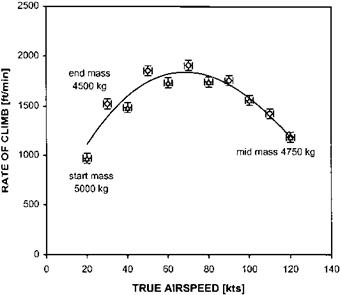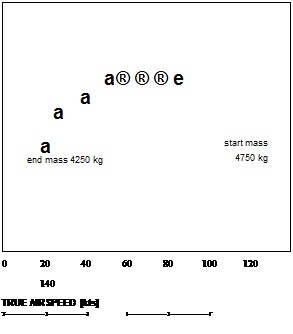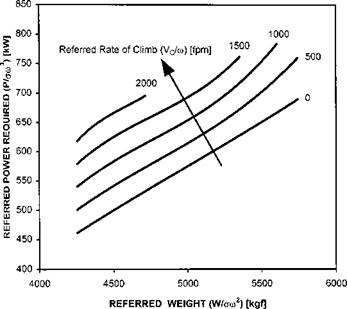Clearly the free-air hover technique necessitates some form of omnidirectional low airspeed measurement system so that stabilized vertical flight, relative to the local air mass, can be achieved in the absence of outside references. A variety of systems have been developed; some are restricted to the research environment while others have been produced commercially, primarily for use within fire control computation in weapon systems. Most systems drive a low velocity indicator (LVI) display in the cockpit that comprises a ‘cross-hair’ presentation of longitudinal and lateral airspeed. A selection of methods is described below.
The Hovermeter was a joint CEV/A&AEE development aimed specifically at trials work. It relies on the fact that the rotor downwash in the hover is effectively vertical, with only small swirl and convergence components. A pair of vanes, one pivoted about the X-axis and the other about the F-axis, are mounted in the downwash clear of fuselage turbulence effects. When a small airspeed causes the downwash angles to change, the vanes deflect from their neutral position and cause a commensurate change in cockpit indications. The primary shortcoming of this system is that it cannot compensate for variations in downwash velocity caused by rotor thrust changes.
The Omnidirectional Air Data System (Pacer/OADS) is fitted to the AH 64A Apache and the HH-65 Dolphin. It comprises a pair of total pressure ports mounted on each end of a rotating boom that is concentric with the rotor mast and mounted above the rotor disk. A comparison of the two pressure measurements, via a central diaphragm device, determines the magnitude of any horizontal airspeed. A synchro unit allows the resolution of the direction by comparing the phase of the pressure differential signal with a reference.
The Helicopter Air Data System (HADS) is fitted to some marks of the AH 1 Cobra and the AH 64D Apache. It comprises a boom-mounted swivelling pitot-static head, which is designed to align itself with the local airflow. Once calibrated, the angles of the swivel and the magnitude of the pitot pressure can be resolved to give omnidirectional airspeed indications.
The Vitesse Indiquee Mesure Installation dessais (VIMI) system was developed by the CEV for research but a sophisticated application of the device has been suggested for use in the Tiger attack helicopter programme. The VIMI relies on the principle that the rotor, and therefore the swashplate, will assume a unique orientation relative to absolute vertical when the helicopter is in the hover at a particular AUM. In its simplest form the VIMI compares pitch and roll attitudes to cyclic control positions and resolves a flight director display which tells the pilot what control inputs are required to achieve a hover. However, airspeed is not the only influence on attitude and control position in the hover and so a simple VIMI system can only be optimized for one AUM and CG condition. A more sophisticated system would employ a microprocessor to compute the effects of AUM, CG and tail rotor roll (pedal position).
With the possible exception of the VIMI, the big drawback to all of these systems is that they require independent calibration for a particular installation. This is normally achieved by conducting a series of low airspeed points using a pace vehicle. A range of AUM and IGE and OGE points may have to be flown. In the case of the HADS, this process is known as the ‘characterization’ of a particular installation. The effect of air density will need to be taken into account to ensure that a system that has been characterized at low altitudes gives accurate indication at higher altitudes.
The installation and calibration of a low airspeed sensing system is clearly impractical for all but the most prolonged test programmes. The formation method, which entails flying the test aircraft close to a suitably equipped ‘pace’ aircraft and using it as an external hover reference, provides a practical alternative. The optimum separation is twice the rotor diameter of the larger aircraft. Any closer is not only dangerous but can also produce distortion of the results due to downwash interference. The greater the separation the more difficult it becomes to hold a steady relative position. One minor complication is that if the changes in hover power requirement with fuel burn of the two aircraft are significantly different, relative vertical motion can develop over the duration of a test point despite the maintenance of constant power settings. The formation method may be extended to cover vertical climb testing provided the helicopters have compatible vertical agility. In this case the test aircraft initiates the desired ROC and the reference aircraft matches the ensuing climb. It is best to have two crew members in the reference aircraft so that the pilot can concentrate on maintaining vertical flight whilst his colleague observes the test aircraft and advises on power settings. Thus the test aircraft can maintain a constant power setting while the reference aircraft remains responsible for maintaining plan position.
When entering a free-air hover using internal references extreme caution must be exercised to avoid vortex ring, loss of control due to inadvertent rearwards flight and overtorqueing. Our experience suggests that the best technique is to approach the hover from slightly below the desired altitude. The initial deceleration to, say, ten knots less than Vimp may be conducted quite rapidly but thereafter it is crucial to anticipate the requirement for additional power as speed is reduced further. A constant decelerative attitude (say about 5 degrees nose-up) is maintained until the longitudinal airspeed is virtually zero at which point a hover attitude is positively selected whilst making due allowance for tail rotor roll and with sufficient power applied to prevent a ROD. If insufficient power is available, the test point should be rejected by selecting a positive accelerative attitude and flying away. Once a coarse hover has been established, small attitude/trim adjustments may be made to refine the zero airspeed condition. Once the hover is established, small collective adjustments in either direction may be made to refine the altitude. To guard against an inadvertent entry into the vortex-ring condition a ROD of greater than about 300 ft/min should not be allowed to develop. Equally the minimum hover height (AGL) should be chosen with due consideration of the anticipated height loss involved in recovering from inadvertent entry into the vortex-ring condition.
The actual method of test for free-air hovering is self-evident. The test aircraft is simply stabilized at the highest desired referred weight, using whatever reference is available, and data is recorded. A rotor speed sweep may be conducted at each hover either to increase the range of tested Wlam2 or to evaluate TE. Remember that a change in Nr will always affect W/am2 and will require a collective adjustment to maintain zero vertical speed. This procedure is then repeated as required at decreasing altitudes until the desired range of referred weight has been achieved. The normal aircraft VSI is used to determine the desired ROC. There may well be inaccuracy in the VSI readings, especially near the hover, and so frequent cross checking to the altimeter is required. Once experience is gained with a particular installation, it becomes simple to set up, for example, a 50 ft/min ROD (indicated) to actually achieve a hover.















 2500
2500







